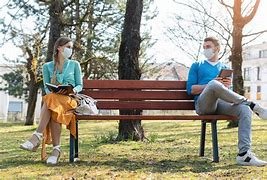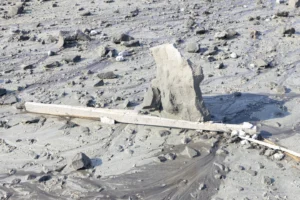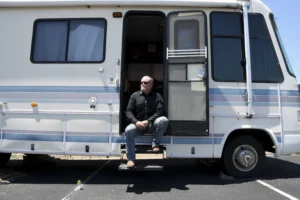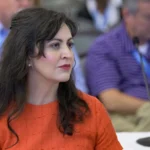Testing and Isolating Top Lockdowns in Infectious Disease Fight, UW Researchers Find
Faculty study concludes such strategies also produce economic benefits
- Published In: Other News & Features
- Last Updated: May 28, 2023

Physical and social distancing is one way to prevent the spread of infectious diseases. (Courtesy photo from Southern Connecticut State University).
By K.L. McQuaid
Special to the Wyoming Truth
Regular testing and self-isolating may produce better health outcomes and generate less economic stress than locking down businesses and schools in the fight against infectious diseases, a new study by University of Wyoming researchers concludes.
The findings by a team of UW Department of Economics faculty, together with other recent analysis, could have profound implications on public policy and how governments handle future public health emergencies like COVID-19.

The research team’s study, which appears in the online, Nature-published journal Scientific Reports, is unique because is the first to analyze the impact of “superspreading,” a phenomenon where a large number of people are exposed to a contagion by small number of infected persons.
Using an integrated economic and epidemiological model it developed, the economists also concluded that it could take between five and 10 years before the financial ravages of the COVID-19 pandemic fully dissipate.
But Stephen Newbold, a researcher on the study, said the U.S. economy has exceeded those expectations to date.
“I think we’re on a bit of a faster trajectory of recovery,” said Newbold, a UW associate professor. “There was a lot of discussion, especially early on, that predicted a V-shape recovery, and I think the nation has mostly outdone that, though there are a lot of factors at play that are hard to disentangle.”
In early 2020, when the COVID-19 took hold in the U.S., little was known about how the disease spread or how to prevent it. Hospitalization and deaths were common, as doctors, researchers, public health officials and hospitals scrambled to contain the contagion and determine the best methods of treatment.
In response, many state governments recommended that people distance themselves from others, restrict travel, wear facemasks in groups and work from home. Many schools and businesses closed or limited required attendance.
In Wyoming, so-called “stay-at-home” orders were not implemented, and students and teachers returned to classrooms in the Fall of 2020.
Newbold and his team of economists – David Finnoff, Jason Shogren, Linda Thunstrom and PhD graduate Madison Ashworth – acknowledge that in the early stages of the pandemic, physical distancing was important in the battle against the unknown disease.

But they note that distancing measures came at a significant economic cost, in the form of lost wages and employment and financial uncertainty.
The economists’ model determined that regular testing for the disease – every other day for a period lasting up to 10 months – could reduce deaths from infection by 67.4% over social distancing policies.
At the same time, the “net benefit” to an economy’s gross domestic product would be more than double that of economic output from distancing measures.
“There’s a lot more flexibility in testing and self-isolating at the onset of symptoms versus blanket lockdowns that do not distinguish between infected and uninfected individuals,” Newbold said. “It’s more liberating.”
Testing and self-isolating success hinges, however, on widespread compliance of 70% of a population, which Newbold and his colleagues determined was “plausible.” He notes compliance would have to fall below 20% before physical distancing would provide a greater health benefit, according to the model developed.
“I’m really glad these studies are being done,” said Dr. Alexia Harrist, an epidemiologist and chief of the Public Health Sciences Section at the Wyoming Department of Health.
“We should be evaluating what was effective and what was not in the fight against COVID-19 so we can better prepare for whatever might come next,” Harrist told the Wyoming Truth. “We should be learning all we can.”
Harrist notes that effective and affordable tests to detect COVID-19 were not available at the onset of the pandemic. Knowing that regular testing can produce significant benefits, however, could dictate future pandemic protocols.
“No one wants things to be closed,” Harrist said. “At the beginning of the pandemic, closures were part of the protocol, because we didn’t have vaccines, we didn’t have effective therapies. Public health officials have to take the information available at the time and make the best decisions based on that. We’re in a much better place now because we do have vaccines, we do have therapies that work, so fewer people are being hospitalized and dying from the disease.”
Newbold acknowledges that a combination of mitigation and suppression strategies might be most effective in combating contagious diseases, and that there is “no clear answer” on how best to react.
The economists’ Scientific Reports work won’t be their last on the subject, either. Thanks to a National Science Foundation grant, the UW faculty will continue studying the effects of COVID-19 through 2025.
Newbold said the group’s next study will focus on how voluntary self-protection is shaped by trust in public health authorities and the information they provide.
“I think the hope is that we can use everything we’ve learned (and continue to learn) from the past three years to be better prepared and respond appropriately if or when we encounter another pandemic,” Josh Hannes, vice president of the Wyoming Hospital Association, wrote in an email.













